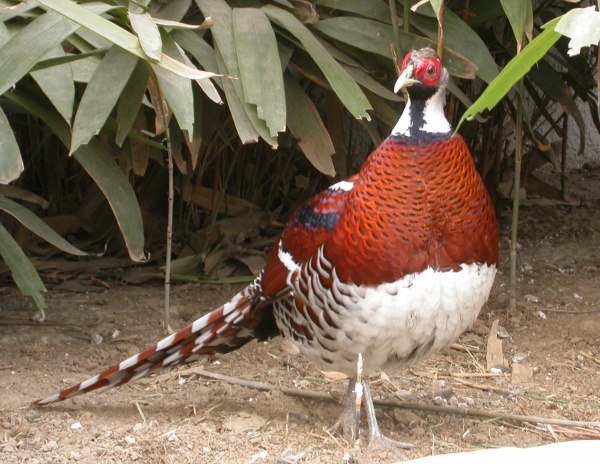Facts About Elliot's pheasant
Elliot's pheasant is a striking bird native to southeastern China. Male Elliot’s pheasants can grow up to 80 cm (about 31 inches) in length, while the females are smaller, reaching around 50 cm (approximately 20 inches). The males are particularly eye-catching with their unique mix of brown and white feathers, a black throat, chestnut-brown upper parts, and vivid red skin around their faces. The females, on the other hand, are more subdued in color, featuring rufous brown feathers, a blackish throat, and a whitish belly.
These birds have a varied diet that includes seeds, leaves, and berries. They make their homes in evergreen and mountain forests, typically at altitudes ranging from 200 to 1,900 meters (around 650 to 6,200 feet).
Elliot's pheasant was first described in 1872 by the British naturalist Robert Swinhoe, who named it "Phasianus ellioti" in honor of the American ornithologist Daniel Giraud Elliot. It is also known as the Chinese bar-backed pheasant or Chinese barred-backed pheasant. The species can be found across several provinces in southeastern China, including Guizhou, Hubei, Anhui, Zhejiang, Fujian, Jiangxi, Hunan, Guangxi, and Guangdong.
Despite facing threats such as habitat loss and hunting, Elliot's pheasant is currently classified as "near threatened" on the IUCN Red List of Threatened Species. This status suggests that while there are concerns, the population isn’t in rapid decline. Additionally, the bird is listed on Appendix I of CITES, underscoring the importance of its conservation.

 Tajikistan
Tajikistan